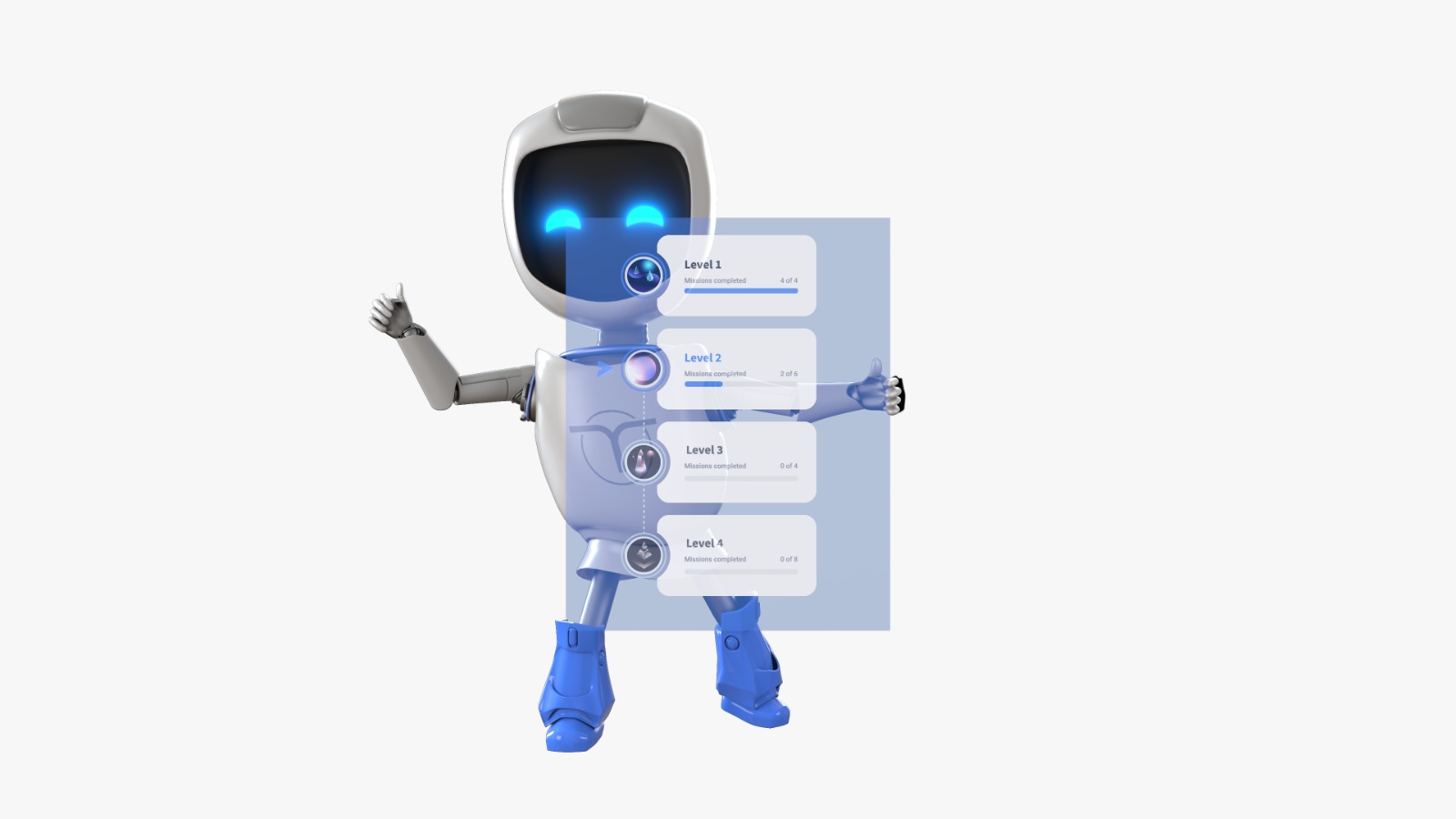Employees click “complete training” without actually learning. Then companies wonder why they see no improvement in employee engagement, performance, or retention. The problem isn’t employees’ lack of interest—they’re already juggling enough—but the outdated remote training that has dominated hybrid and remote work for the past five years.
Outdated remote training wasn’t built for today’s hybrid workforce. It’s time to embrace a smarter, more engaging approach. This article explores the common struggles businesses—and employees—face with outdated remote training initiatives and how to adapt them for today’s hybrid work model.
Remote Training = The New “Traditional” Training (And That’s a Problem)
During the COVID-19 pandemic, many organizations rushed to adopt remote training. But as the world embraced hybrid or even fully on-site work, training remained stuck in the past. Instead of innovating, many businesses simply transferred existing content onto digital platforms. The result? A virtual version of traditional training with the same issues: disengagement and lack of impact.
Remote training was supposed to be the future, but without innovation, it has become just another version of the past.
The Shift to Hybrid Work
Hybrid work isn’t the future—it’s the present. For example, according to Business Insider, 79% of tech companies now offer fully flexible policies, while only 3% require full-time office presence. But the shift is not entirely met with excitement by all employees. In fact, Indeed reports that 37% of remote workers would rather quit than return to an inflexible office setting.
On top of that, The Times highlights that employees who feel their company isn’t investing in their growth are more likely to leave. This isn’t just speculation—between September and December 2024, nearly 3 million U.S. employees quit their jobs each month.
So, with employees increasingly willing to quit over rigid workplace policies, failing to modernize training puts companies at risk of high turnover, widening skills gaps, and declining competitiveness.
One-Size-Fits-All Doesn’t Work Anymore
The problem: Generic training content is no longer effective for today’s workforce. This standardization of training programs fails to account for the different learning styles, skill levels, and roles within an organization. Employees are often stuck with static, pre-recorded content that doesn’t adapt to their evolving needs or specific responsibilities.
This issue is, in essence, a consequence of a deeper structural problem. According to Trainingmag, 33% of companies cite a lack of resources and personnel as a major challenge when it comes to employee development. Learning and Development (L&D) teams often lack the budget, personnel, and time to craft tailored training experiences. As such, they resort to using outdated or generic content.
The solution: Invest in personalized, adaptive training programs and provide L&D teams with the necessary resources to create dynamic, role-specific learning experiences.
Employees Are Just Checking Boxes—Not Learning
The problem: Let’s be real here. How many of us actually read and paid attention to those long online training materials that need to be done by COB, among other urgent tasks? The last thing an employee needs at the end of the day is to read a PDF about safety measures at the office (while they are fully working remotely…).
It’s easy to trick the system, after all. Classic e-learning platforms make it easy to skip through content without absorbing information. Employees can fast-forward through videos, complete multiple courses at once, or simply click through slides to finish training. In some cases, organizations have even had to discipline employees for exploiting online training loopholes.
The solution: Implement engaging, interactive training that promotes active participation and real understanding.
Lack of Real-Time Feedback and Collaboration
The problem: Many remote training programs miss the mark by lacking interactive features that drive engagement. Gallup reports that 19% of employees cite the absence of real-time feedback as a major challenge in hybrid work.
Without opportunities for interactive discussions, Q&A sessions, or collaborative exercises, employees struggle to retain information and apply it effectively. Engagement is critical for learning retention and skill development, and without these interactive elements, remote training becomes passive and less impactful.
The solution: Integrate more dynamic, engaging components into virtual training programs.
Lack of Accessibility and Adaptability
The problem: Even when employees want to learn, they struggle to see how training connects to their daily tasks. SurveyMonkey found that 86% of employees say job training is important, but many feel it lacks practical application. Additionally, hybrid teams often struggle with rigid training schedules that don’t accommodate different time zones and work locations.
The solution: Offer flexible, on-demand training that is directly tied to employees’ roles and daily tasks, ensuring accessibility for hybrid teams across time zones.
The Risks of Ignoring the Shift to Modern Training Methods
Companies that fail to modernize their remote training strategies risk serious consequences:
- Talent Retention Suffers: Employees expect career development, and without it, they leave, seeking opportunities where their skills and growth are prioritized. McKinsey reports that 35% of employees quit due to a lack of career growth opportunities.
- Skills Gaps Are Growing: When training isn’t adapted to new work models, employees fall behind, creating a widening gap in skills development. Over time, this gap can hinder career growth and reduce overall team efficiency.
- Competitive Advantage Declines: Companies that fail to modernize their training strategies risk falling behind as competitors invest in upskilling their workforce. However, companies that invest in training see direct benefits. According to HuffPost, organizations spending $1,500 or more per employee on training experience 24% higher profit margins.
The Solution: A Modern Approach to Hybrid Training
The good news? Remote training doesn’t have to be ineffective. Companies that invest in modernized, flexible learning solutions will see better engagement, retention, and productivity. Here are some examples to upgrade your company’s remote training efforts.
Microlearning & On-Demand Access
- Characteristics: Short, easily digestible learning modules allow employees to learn at their own pace. These bite-sized lessons improve retention and engagement by focusing on specific, actionable skills rather than overwhelming learners with lengthy content. In addition, microlearning platforms are ideal for hybrid teams, as well as international and multicultural organizations, since they can be easily accessed at any time, are available in multiple languages, and offer accessibility options.
- Example: A salesperson can use microlearning to learn about the company’s products and clients through 5-minutes lessons.
Real-Time Analytics & Feedback
- Characteristics: Microlearning platforms track employee progress, measure engagement, and provide instant feedback to ensure effective learning. Managers and L&D teams gain insights into knowledge gaps, allowing for timely interventions and continuous improvement in training effectiveness.
- Example: Managers and trainers have access to the employee’s training progress, can leave comments and feedback on their work, and even intervene when they notice a dip in training performance.
Generative AI for Personalized Learning
- Characteristics: AI generates dynamic, role-specific training materials based on employees’ unique learning needs and job functions. These intelligent systems ensure content remains relevant, reducing time spent on unnecessary topics while enhancing comprehension of critical information.
- Example: A pharma sales representative will have access to a different type of training than a beverage sales representative. While pharma sales training focuses on product knowledge, compliance, and regulations, beverage sales training is primarily centered on the product, understanding the customer, the market, and the company’s branding.
Collaboration & Social Learning
- Characteristics: Interactive training platforms enable peer-to-peer learning, fostering collaboration through group projects, discussion forums, and virtual team exercises. This approach enhances engagement, strengthens teamwork, and ensures knowledge is shared across departments.
- Example: After completing a training task, employees gain visibility into their colleagues’ work. They can leave feedback, ask questions, and engage in discussions around the topic, fostering collaboration.
Gamification & Engagement
- Characteristics: Gamified training turns learning into an interactive and enjoyable experience by incorporating elements like points, leaderboards, badges, and challenges. This method increases motivation, enhances knowledge retention, and makes training feel less like a chore.
- Example: A new employee goes through the onboarding process using gamification. They complete missions, earn badges for their accomplishments, progress through a game journey to more complex training procedures, and track their colleagues’ progress in real time.
The Future of Learning is Hybrid—Are You Ready?
Remote training is no longer enough—it needs to be modernized for the hybrid workforce. Companies must move beyond static, one-size-fits-all training approaches and embrace modern training modules like AI-driven platforms, microlearning, and real-time analytics to drive engagement and effectiveness.
One such platform is Code of Talent, which directly addresses the common pitfalls of outdated remote training with:
- Bite-sized, interactive learning modules that keep employees engaged.
- Real-time feedback that ensures information retention.
- AI-driven personalization and adaptive learning pathways.
- A gamified and fun experience that keeps employees motivated.
- Engaging formats that encourage connection to training.
With platforms like Code of Talent, organizations can build dynamic, engaging, and effective learning experiences that meet the needs of today’s hybrid teams. Take the next step in transforming your remote training by integrating innovative solutions that drive results and empower your workforce.
Source: Freepik





